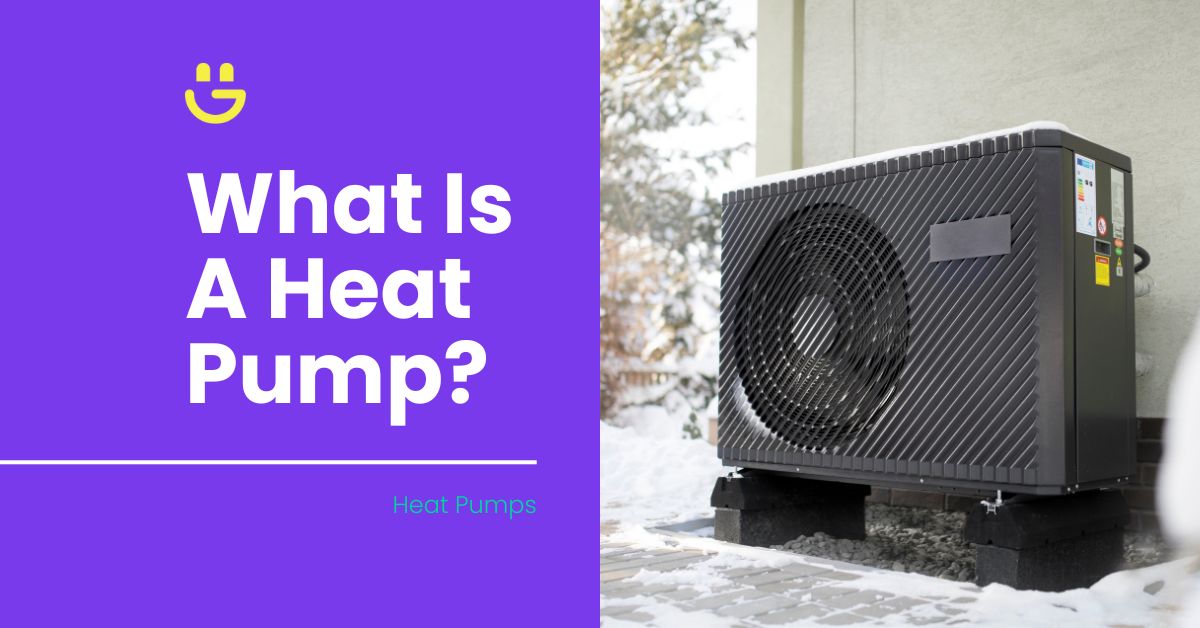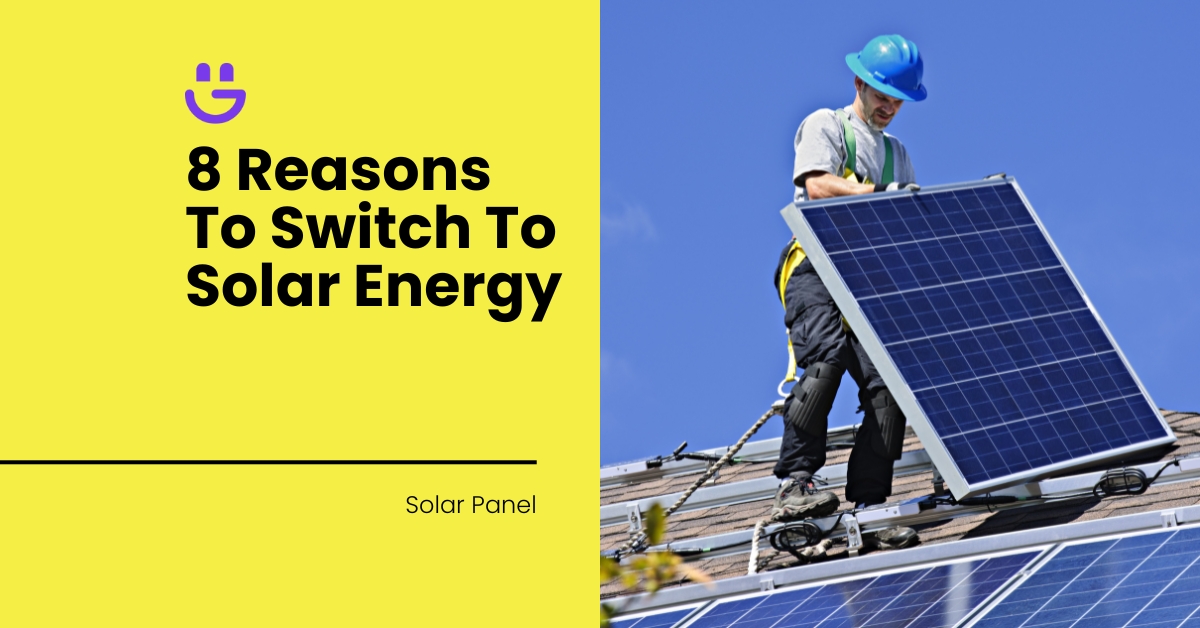Last Updated on June 9, 2025
Heat pumps are designed to regulate indoor temperatures and heat and cool spaces effectively, making them an energy-efficient and eco-friendly solution for home climate control. Their popularity as a home heating solution has soared in the race to net zero.
But what is a heat pump, and what does it do?
In this comprehensive guide, we’ll explore what heat pumps are, how they work, and examine their environmental impact. We’ll also discuss the terminology and costs involved with having one installed.
Contents
Heat Pump Basics
A heat pump is a versatile device in a home’s central heating system. Heat pump components are the compressor, condenser, expansion valve, and evaporator. These four components work together, using minimal energy, to carry external heat into a home.
Each component plays a role in how a heat pump system works, but it does help to understand what the essential parts of a heat pump do.
- Compressor: The compressor is responsible for compressing refrigerant gas, which increases its temperature and pressure.
- Condenser: The condenser releases the heat absorbed by the refrigerant gas to the surrounding air or water.
- Expansion valve: This valve reduces the refrigerant’s pressure, causing it to cool down.
- Evaporator: The evaporator coils absorb heat, causing the refrigerant to evaporate and turn into gas.
- Refrigerant gas: Refrigerant gas enables the transfer of heat. It plays a critical role in the heating and cooling process by absorbing and releasing heat as it circulates through the system.
- Heat exchanger: A heat exchanger transfers thermal energy from one fluid to another without mixing them. Inside the heat exchanger, the natural gas burns, which transfers this heat to air or water.
How heat pumps work
The energy exchange in heat pumps involves absorbing cold air and releasing warming air using an indoor and outdoor unit. In summer, the indoor unit absorbs the hot air inside your home and transfers it outside. The compressor then circulates refrigerant to an indoor evaporator coil, which absorbs heat, resulting in cooler air that gets blown into the home.
In winter, the process is reversed. The outdoor unit pulls heat in from the outside to warm your home. Warm air goes through the compressed refrigerant coolant that is compressed to heat the air. This air is then pushed through the home.
Heat pumps do not generate heat; rather, they move it from one place to another.
Types Of Heat Pumps
There are four types of heat pump technology that can be used to transfer heat.
Air source
Air source heat pumps (or air-to-air heat pumps) extract heat from the warm air outside your home to run underfloor heating or radiators.
An air source heat pump warms water that is stored in water cylinder tanks. It typically works at 200-400% efficiency, which can help lower your energy bills.
Ground source
A ground source or geothermal heat pump is a renewable energy heating system that uses buried pipework to extract natural heat stored in the ground. This system compresses the heat energy to a higher temperature, which can be used to provide heating or hot water in your home.
Ground source heat pumps operate like a furnace or boiler in a central heating system, providing homes with 100% of their heating and hot water requirements throughout the year. If you want to see how these heat pumps differ from (and compare to) boilers, check out our guides on heat pumps vs gas boilers and the benefits of choosing between a hydrogen boiler and a heat pump.
Water source
Water source heat pump systems are incredibly efficient and work effectively in cold weather. Like an air-to-air heat pump, water source heat pumps use the heat energy in water to produce warm air and hot water for your home.
There are two types of water source heat pumps: closed-loop and open-loop systems. Closed-loop systems are better suited for lakes and ponds, whereas open-loop systems use boreholes.
Heat pump hybrid systems
A heat pump hybrid system uses a heat pump and a gas furnace to provide heating and hot water. These units are typically fitted with an LPG, oil, or gas boiler and work like a central air conditioner.
In warmer weather, a hybrid system extracts heat from your home, cooling the temperature. In colder temperatures, the furnace can take over to heat your home when there isn’t enough heat to be extracted from the outside.
Heat Pump Efficiency And Metrics
When assessing heat pump efficiency, you need to understand two key metrics: the Coefficient of Performance (COP) and the Seasonal Coefficient of Performance (SCOP).
COP represents the ratio of heating and cooling output to the energy input. This indicates how much thermal energy the heat pump generates compared to the electricity it consumes.
For example, if a system has a COP of 3, it means that for every unit of electricity consumed, the pump provides three units of heating or cooling energy. A higher COP value indicates better efficiency.
SCOP measures the energy efficiency of a heat pump over an entire heating system. Several factors are considered to evaluate the heat pump’s performance, including varying temperatures and operating conditions.
For instance, if a heat pump consumes 1,000 kWh of electricity over the heating system, it will produce 4,000 kWh of heating energy. This means the SCOP value of the heat pump is 4.0.
A higher COP and SCOP value means a more energy-efficient heating pump, which can lower your energy costs over time.
Environmental Benefits Of Heat Pumps
Since heat pumps transfer heat instead of generating it, they are considered energy efficient, making them more eco-friendly than traditional heating systems like boilers.
Carbon emission reductions
Compared to fossil fuel heating systems, heat pumps can reduce a household’s carbon emissions significantly.
Research from the EU Science Hub suggests that replacing 30 million residential fossil fuel boilers with heat pumps could reduce household energy consumption by 36%, which would lead to reduced carbon emissions by 28%.
Since heat pumps transfer heat from the air or ground instead of burning fuel to create heat, it’s fair to say that minimising the use of gas, oil, or coal within a home can effectively lower greenhouse gas emissions.
Support for renewable electricity
Heat pumps are compatible with renewable energy sources, which makes them a sustainable and eco-friendly central heating alternative. Solar, wind, and hydropower can be used to power heat pumps.
Heathrow Airport, one of the world’s busiest airports, has successfully implemented sustainable heating and cooling solutions as part of its commitment to reduce carbon emissions. The airport installed large-scale ground source heat pumps, fuelled by biomass boilers, to heat and cool their facility.
Is A Heat Pump Right For Your Home?
Heat pump systems are an excellent option to heat your home efficiently and sustainably. Here are some things to consider before having one installed.
Heat pump system design considerations
The following are five critical design considerations:
1. Heat pump size
An oversized heat pump will waste heat, increasing your energy bills. On the other hand, a smaller unit may not meet your energy needs, so consider the size of your home when you choose a system.
2. Radiator and underfloor heating compatibility
The choice of heat emitters plays a critical role in the effectiveness of your heat pump. Heat emitters include traditional and smart radiators, and underfloor heating systems. Ensure that the heat pump’s operating temperatures are compatible with your home’s radiators and that the lower water temperatures are compatible with your installed underfloor heating.
3. Hot water provision
Heat pumps require hot water cylinders to produce hot water, and different models could vary in their ability to meet your home’s hot water demands.
4. Insulation and heat loss
A heat pump’s efficiency is determined by your home’s current insulation and the extent it loses heat. Adequate insulation to minimise heat loss can improve the system’s performance.
5. Compatibility of existing heating systems
Integration with existing heating systems should be seamless. However, understanding how a heat pump can complement or replace current systems is crucial for a successful transition.
Heat Pump Installation and Operating Costs
The initial upfront costs can be off-putting; however, these costs can vary. Ground-source heat pumps are far more expensive than air-source heat pumps since the installation of the former requires excavation for pipework. The costs could vary depending on your home, with installation taking around two to five days.
Alternatively, government incentives and heat pump grants, like the Boiler Upgrade Scheme, can help cover the cost of installing a heat pump system. Should you be eligible, the scheme could cover £7,500 of the cost and installation of an air or ground source heat pump.
Despite the initial upfront costs, the long-term financial benefit when it comes to heat pump running costs will significantly decrease your heating bills. Ground source heating pumps are more efficient, with a shorter payback period of five to 10 years. An air source heat pump is more cost-effective but has a payback period of around 12 years.
Maintenance
Heat pumps require professional maintenance – including cleaning, refrigerant gas top-ups and system checks. Regardless of the type you have, this must be done annually.
It’s also a good idea to examine the different manufacturers’ warranties – some offer two, five, seven, or 10 years, depending on the brand. Warranty coverage should cover protection against defects, labour, heat pump parts, and more.
FAQs
Is a heat pump the same as an AC?
A heat pump can heat and cool air, but an air conditioner does not. Air conditioners are paired with furnaces in winter to provide heat, so if you are considering whether you should get a heat pump vs. air conditioner, the former is far more efficient.
What are the disadvantages of a heat pump?
While using a heat pump has benefits and drawbacks, the most significant disadvantage is the installation cost. The prices can differ depending on the model you choose, but their energy efficiency can offset the initial upfront costs.
How does a heat pump work in winter?
A heat pump works the same way all year round, which means heat pumps work in cold weather. The difference is that the outdoor unit extracts the heat to transfer it inside in winter. In summer, the indoor unit extracts the heat from the inside to transfer it outside.
Conclusion
Heat pumps are an efficient and sustainable home heating solution. Installing one of these systems can reduce your environmental impact through its energy efficiency and can result in long-term cost savings on energy bills.
Request a free air source heat pump quote from Eco Happy today.






James Elston
Boiler Expert
James Elston is the top boiler replacement and heating expert at Eco Happy. He has over 20 years of experience in the industry, focusing on Gas Safe boiler installations and offering home-heating and energy-saving solutions to homeowners across the UK. From sourcing the most energy-efficient combi boiler to providing specialist heating advice, James ensures that Eco Happy maintains the highest standards and best customer service.